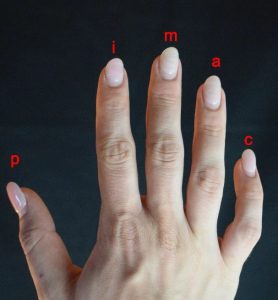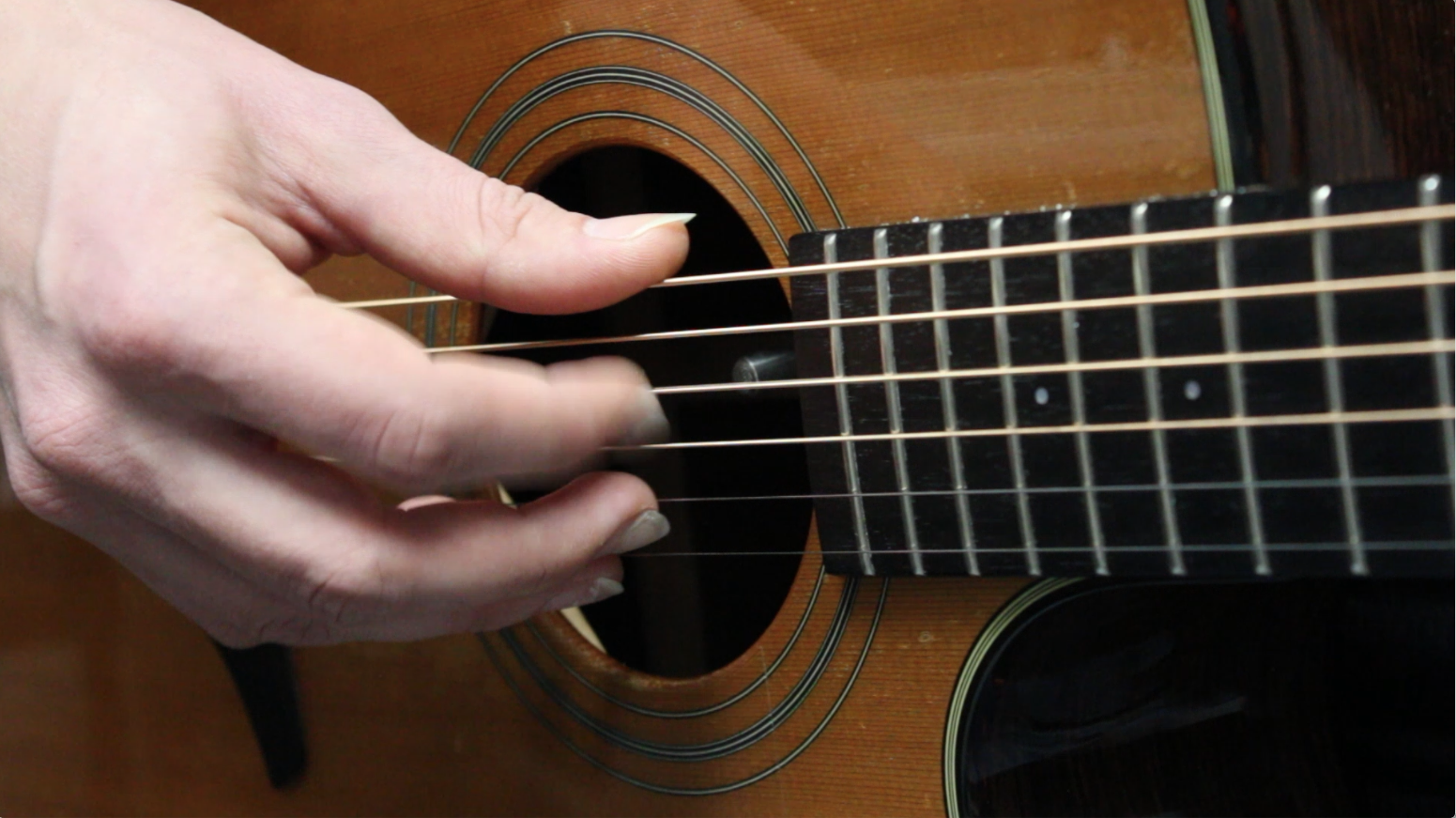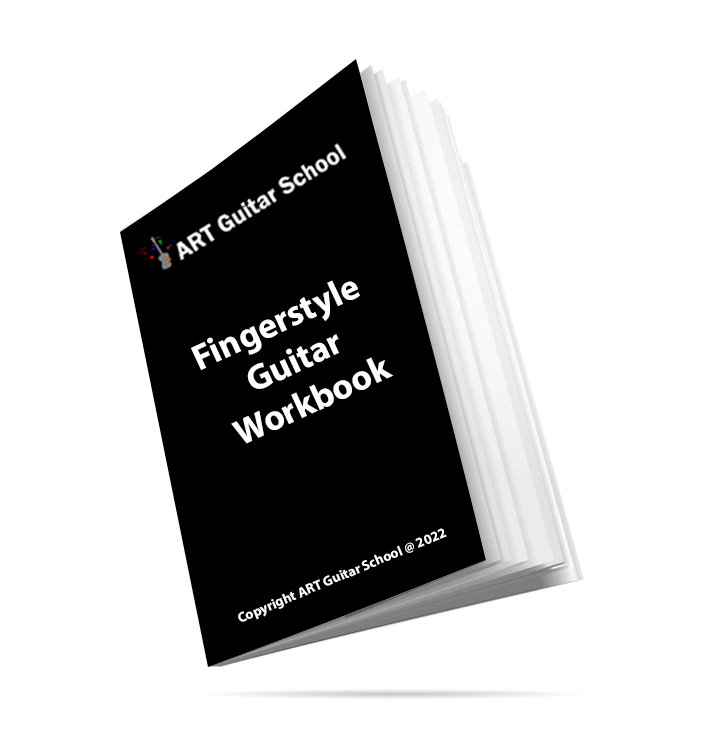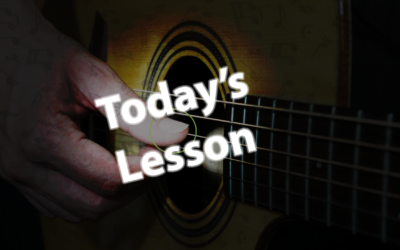FINGERPICKING KEY

The right hand:
P = Thumb
I = Index
M = Middle
A = Ring
Fingerpicking Pattern No. 1
This is the most essential fingerpicking pattern to start with. It requires no left hand chord or fretted notes. It is used in many popular fingerpicking songs and some songs are slight variations of this same pattern.
We have all open strings being plucked in sequential order. Each note is a quarter note in duration and will last exactly one second each if played at 60bpm.
Lets get to playing!
We will pluck each open string in order starting from the 6th string (Low E) and ending on the 1st (High E).
Step 1. Lets start with thumb (p) and pluck the 6th-4th string
Step 2. Pluck index (i), middle (m) and ring (a) on the 3rd-1st strings.

Here is a video demonstration of the finger picking pattern:
If you were having trouble please contact us and we will help you!
FOLLOW US ON
Get our FREE Fingerstyle Workbook!
RELATED BLOG POSTS
Guitar Legato Exercises
Legato is a technique that allows you to play smooth and connected lines on the guitar, creating a flowing and expressive sound. By mastering different legato exercises, you can improve your finger dexterity, enhance your phrasing, and develop your ability to play fast and fluid lines.
To start practicing legato on the guitar, begin by learning the basic hammer-ons and pull-offs technique. Use your fretting hand to play notes by hammering on the string with your finger or pulling off the string with your finger. Practice playing these techniques slowly and evenly, focusing on clean and clear articulation.
Next, work on developing your legato technique by incorporating hammer-ons, pull-offs, and slides into scales, licks, and solos. Experiment with different finger combinations and patterns to create smooth and connected lines. Practice playing legato exercises with a metronome to improve your sense of timing and control.
You can also practice legato exercises by incorporating legato into your existing playing style. Try adding legato to scales, arpeggios, and chord progressions to enhance your phrasing and create dynamic and expressive melodies.
By incorporating legato exercises into your daily practice routine, you can improve your finger dexterity, enhance your phrasing, and become a more fluid and expressive player.
Guitar Tapping Techniques
Tapping is a flashy and expressive technique that allows you to play fast and intricate passages on the guitar. By mastering different tapping techniques, you can create unique sounds, expand your melodic possibilities, and develop your own distinctive playing style.
To start practicing tapping on the guitar, begin by learning the basic two-handed tapping technique. Place your picking hand on the neck of the guitar and use your fretting hand to tap the strings, creating a quick and percussive sound. Practice tapping on different strings and frets to develop finger coordination and accuracy.
Next, experiment with different tapping patterns and sequences to create melodic lines and solos. Try tapping arpeggios, scales, and chord shapes to explore the full range of possibilities that tapping has to offer. Experiment with different finger combinations and rhythms to create unique and dynamic sounds.
You can also practice tapping exercises by incorporating tapping into your existing playing style. Try adding taps to scales, licks, and solos to enhance your phrasing and create new textures and effects.
By incorporating tapping techniques into your daily practice routine, you can expand your melodic possibilities, develop your finger coordination and accuracy, and become a more creative and expressive player.
Guitar Bending Exercises
Bending strings is a fundamental technique for guitar players, allowing you to add emotion, expression, and character to your playing. By practicing bending exercises regularly, you can develop your ear for pitch, improve your finger strength and control, and enhance your overall technical proficiency on the instrument.
To start practicing bending on the guitar, begin by learning the basic half-step and whole-step bends. Place your fretting hand on the neck of the guitar and use your fingers to push the string upward, bending the pitch of the note. Practice bending slowly and evenly, focusing on hitting the target pitch accurately.
Next, work on developing your bending technique by incorporating bends into scales, licks, and solos. Experiment with different bending styles, such as pre-bends, release bends, and bend-and-hold techniques, to create a wide range of expressive effects.
You can also practice bending exercises by playing long, sustained bends or quick, staccato bends, focusing on control and accuracy. Use a tuner to check your pitch accuracy and adjust your technique as needed.
By incorporating bending exercises into your daily practice routine, you can improve your ear for pitch, enhance your expressive playing, and become a more dynamic and versatile player.




0 Comments